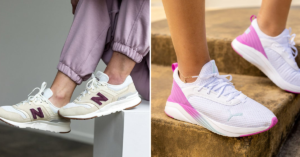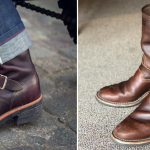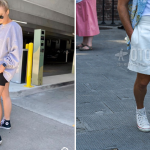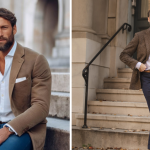Welcome to the fascinating world of animal-friendly fashion! Whether you’re a conscious consumer, an animal lover, or simply curious about the evolving landscape of the fashion industry, this article delves into the impact of traditional fashion practices on our furry and feathered friends. From the use of animal-derived materials to the ethical considerations surrounding animal welfare, we’ll explore how the choices we make as consumers can shape the future of fashion.
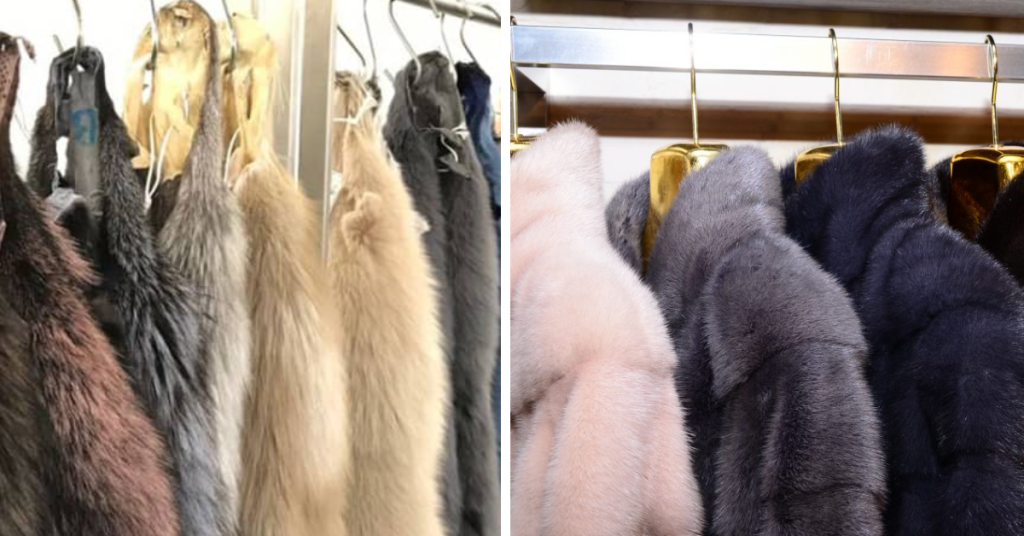
In a society increasingly focused on sustainability and ethical practices, the concept of cruelty-free and vegan fashion has garnered significant attention. But what do these terms really mean, and how do they translate into the clothes we wear? Join us on a journey through the complexities of the fashion world as we unravel the significance of opting for animal-friendly alternatives and highlight the importance of making informed choices when it comes to dressing in style.
The Impact of Traditional Fashion on Animals
Traditional fashion often relies on materials like leather, fur, wool, and silk, which directly impact animals. Animals such as cows, rabbits, sheep, and silkworms are raised or exploited for their hides, fur, wool, and silk in the fashion industry. This can result in various ethical concerns regarding animal welfare and the treatment of these creatures.
The demand for traditional fashion items has led to mass production methods that prioritize efficiency and profit over the well-being of animals. Processes like factory farming, fur trapping, and live-plucking have raised awareness about the harsh realities faced by animals in the fashion supply chain.
Cruelty Free and Vegan Fashion: What They Mean
Cruelty-free and vegan fashion are all about keeping animals out of the fashion equation. When you see these labels on garments, it means that no furry or feathered friends were harmed in the making of your stylish ensemble. Brands that opt for cruelty-free and vegan practices choose materials like organic cotton, hemp, or innovative synthetics instead of animal-derived fabrics like leather, fur, or silk.
So, if you’re all about rocking outfits with a conscience, cruelty-free and vegan fashion is where it’s at. You can strut your stuff knowing that your killer look didn’t harm any creatures along the way. Plus, the growing popularity of these animal-friendly choices is pushing the fashion industry towards a more ethical and sustainable future. Who says you can’t slay the fashion game while being kind to our furry companions?
Sustainable Alternatives to Animal Derived Materials
Animal-derived materials like leather and fur have long been popular in the fashion industry. However, as concerns about animal welfare and sustainability continue to rise, the demand for sustainable alternatives is increasing. One such alternative is plant-based materials, such as pineapple leather and mushroom leather, which provide a cruelty-free and eco-friendly option for fashion enthusiasts.
Another sustainable alternative gaining popularity is recycled fabrics made from items like plastic bottles and fishing nets. Brands are embracing these materials to reduce waste and lessen the environmental impact of clothing production. By opting for these innovative substitutes, fashion lovers can make a conscious choice to support a more animal-friendly and sustainable industry.
The Role of Certifications in Ensuring Animal Welfare
Certifications play a crucial role in guaranteeing that fashion products have been made without causing harm to animals. By looking for labels such as “Cruelty-Free” or “Vegan,” consumers can be confident that the items they purchase do not involve any animal testing or exploitation. These certifications act as reassuring markers for individuals who prioritize animal welfare in their purchasing decisions.
Moreover, certifications also help to increase transparency within the fashion industry. When brands obtain certifications that vouch for their animal-friendly practices, they are not only demonstrating their commitment to ethical standards but also providing consumers with the necessary information to make informed choices. These labels serve as a form of communication between companies and customers, building trust and accountability in the process.
How to Identify Animal-Friendly Fabrics and Brands
So you’re looking to make more conscious choices when it comes to your fashion picks? Well, identifying animal-friendly fabrics and brands is a crucial step in aligning your wardrobe with your values. Firstly, keep an eye out for materials like organic cotton, bamboo, hemp, and Tencel, as these are all plant-based and sustainable options that don’t harm animals in their production process. Brands that prioritize these materials are often dedicated to ethically sourcing their materials and ensuring that no animal is harmed in the making of their products.
Secondly, checking for certifications such as the PETA-Approved Vegan label or the Cruelty-Free International bunny logo is a good indicator that a brand is committed to animal welfare. These certifications ensure that no animal testing or animal-derived materials are used in the production of the clothing items. By looking out for these symbols when you shop, you can feel more confident that the items you’re purchasing are not only stylish but also align with your values of compassion towards animals.
The Benefits of Plant Based and Synthetic Alternatives
Plant-based and synthetic alternatives offer a plethora of benefits in the realm of fashion. For starters, opting for plant-based materials such as organic cotton or hemp significantly reduces the environmental impact of clothing production. These materials are biodegradable, meaning they can naturally decompose without leaving behind harmful residues in the soil and waterways. Additionally, plant-based fabrics often require fewer chemicals and pesticides during cultivation, promoting a healthier ecosystem for both wildlife and humans alike.
On the other hand, synthetic alternatives like recycled polyester or nylon provide a sustainable solution to the issue of textile waste. By repurposing plastic bottles or discarded nylon into new garments, these materials help divert waste from landfills and lessen the demand for virgin resources. Moreover, synthetics can offer enhanced durability and performance qualities, making them a long-lasting choice for consumers looking to invest in pieces that will stand the test of time. Ultimately, embracing plant-based and synthetic alternatives not only benefits animals but also contributes to a more eco-conscious and ethical fashion industry.
The Connection Between Animal Welfare and Environmental Sustainability
When considering the link between animal welfare and environmental sustainability, it becomes evident that our choices as consumers play a crucial role in shaping a more ethical and eco-friendly future. Many traditional fashion practices, such as using animal-derived materials like leather and fur, not only harm animals but also have detrimental effects on the environment, contributing to deforestation, water pollution, and greenhouse gas emissions. By opting for cruelty-free and vegan fashion alternatives, we can support the well-being of animals and reduce our carbon footprint simultaneously.
Moreover, embracing plant-based and synthetic materials in fashion can lead to a more sustainable industry overall. Materials like organic cotton, bamboo, and recycled polyester not only spare animals from exploitation but also require fewer resources, emitting fewer harmful chemicals into the environment. By making conscious choices in our fashion purchases, we can contribute to a healthier planet and create a positive impact on both animal welfare and environmental sustainability.
Consumer Demand and the Shift Towards Ethical Fashion
With the rise of awareness about animal welfare and environmental sustainability, more consumers are opting for ethical fashion choices. People are becoming increasingly conscious of the impact their purchases have on animals and the planet. This shift is evident in the growing demand for cruelty-free and vegan fashion options that promote compassion towards animals.
Consumers are seeking out brands that prioritize transparency in their production processes and use sustainable alternatives to animal-derived materials. They are drawn to companies that align with their values of ethical and responsible consumption. As more individuals educate themselves about the importance of supporting animal-friendly fashion, the industry is seeing a notable transformation towards a more ethical and sustainable future.
Inspiring Brands Leading the Way in Animal Friendly Fashion
Everlane is one of those brands that not only focuses on creating stylish clothing but also on promoting transparency in their supply chain. They have a “no fur, no feathers” policy and are committed to using sustainable materials like recycled polyester and eco-friendly dyes. This commitment to animal-friendly practices has earned them a loyal following of conscious consumers who appreciate their ethical approach to fashion.
Another brand making waves in the animal-friendly fashion scene is Stella McCartney. Known for her high-end designs and strict adherence to cruelty-free practices, McCartney uses innovative materials such as vegan leather and sustainable viscose to create luxurious pieces without harming animals. Her dedication to both style and ethics proves that fashion can be both chic and compassionate.
FAQs about Sustainable Fashion and Animal Welfare
What is cruelty free fashion?
Cruelty-free fashion refers to clothing and accessories that are made without harming or testing on animals.
What are some sustainable alternatives to animal derived materials?
Some sustainable alternatives include plant-based materials like cotton, bamboo, and hemp, as well as synthetic materials like recycled polyester and Tencel.
How can I identify animal-friendly fabrics and brands?
Look for clothing labels that indicate the use of vegan or cruelty-free materials, and do some research on brands that prioritize animal welfare in their production processes.
Why is there a connection between animal welfare and environmental sustainability?
Animal agriculture and the use of animal-derived materials contribute to environmental issues like deforestation, water pollution, and greenhouse gas emissions. By promoting animal-friendly fashion, we can help reduce these negative impacts.
Why is consumer demand important in driving the shift towards ethical fashion?
Consumer demand plays a key role in influencing brands to prioritize animal welfare and sustainability. By supporting animal-friendly brands, consumers can help drive positive change in the fashion industry.
Conclusion
The growing emphasis on animal welfare and environmental sustainability is driving significant changes in the fashion industry. By choosing cruelty-free and vegan options, consumers can support a shift towards more ethical practices that prioritize the well-being of animals and the planet. With innovative alternatives like plant-based materials and synthetic fabrics, it’s easier than ever to make compassionate fashion choices that align with your values.
As consumer demand for animal-friendly products continues to rise, the fashion industry is responding by offering more sustainable and ethical options. Brands leading the way in this movement are demonstrating that style and compassion can go hand in hand. By making informed choices, we can all contribute to a more humane and sustainable future in fashion.


